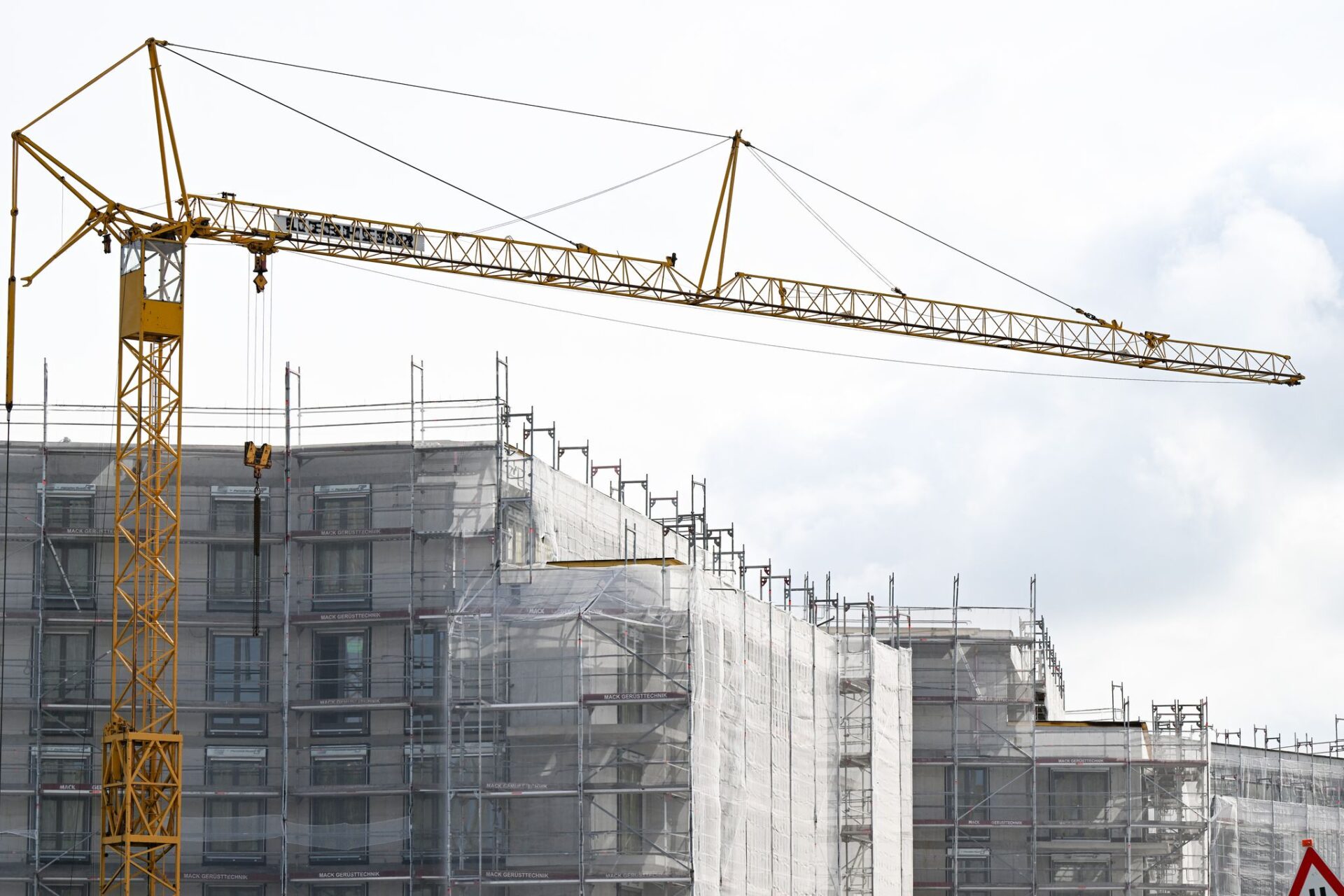Housing: Europe’s Dilemma

Any European who has had to move in recent years has probably lived this nightmare: Rising house prices, rents and utility bills, lack of housing supply and having to find ever more outlandish ways to secure that elusive rental contract.
Europe has a housing problem. And while the European Union has no direct competency, Brussels has realised trouble is on the horizon. In a speech on September 29, the bloc’s first ever Housing Commissioner Dan Jørgensen, said that when talking about housing, “we are talking about the very heart of our democracy in Europe”.
“It’s more than bricks and mortar. It’s more than supply and demand. Really, we are talking about the basic rights and dignity of our people. About the cohesion of our communities, the building blocks of our society, the competitiveness of our economy.”
He added: “Across Europe, there is a palpable feeling of injustice especially among our young people.”
Data snapshot: divergent fortunes across EU member states
No matter which statistic one looks at, the indicators are pointing towards a crisis:
- Over the past 15 years, house prices rose by 60.5 percent, according to Eurostat data released on Friday. Hungary leads with a 277-percent increase, followed by Estonia (250 percent).
- Only in Italy have house prices decreased between 2010 and the second quarter of 2025 – by 1 percent.
- It’s the same for rents: They increased in 26 of the 27 member states, on average by 28.8 percent and up to 218 percent (Estonia). Only in Greece rents decreased by 9 percent.
- In the second quarter of 2025, house prices were up by 5.4 percent in the EU, Eurostat said. The rents increased by 3.2 percent year-on-year.
- Bulgaria for example registered one of the steepest increases in house prices, with 15.5 percent (down slightly from the record 18.3-percent-rise in the last quarter of 2024). Housing loans have also reached record levels in the country. As of August 2025, their volume stood at 30.2 billion Lev (15.4 billion Euro), a 27.4 percent increase year-on-year, according to Bulgarian National Bank data.
- In Germany students are particularly hard hit by rising rents, with prices for rooms in shared flats rising by 6.2 percent year-on-year, according to 2023 figures.
Working to live
An increasing number of households are facing unaffordable housing costs, which the European Parliament defines as spending more than 40 percent of disposable income on housing.
- According to the latest Eurostat figures available, in 2023, 8.8 percent of people in the EU spent more than 40 percent of their disposable income on housing. The highest in Greece with 28.5 percent, the lowest in Cyprus with 2.6 percent.
- In Berlin, a third of households cannot afford an apartment on the open rental market.
- Close to 70 percent of citizens own their home. Home ownership rates remain high in Eastern Europe, but affordability gaps widen in western urban centres.
- In the Czech Republic and Hungary for example, the average apartment now costs around 13.6 times the average annual wage, only in Portugal, the figure is higher. On the other hand, compared to other EU countries, rental housing is the fifth most affordable, according to an index compiled by the Česká spořitelna bank and the Europe in Data portal.
Demand-side dynamics: demographics, migration, and urbanisation
How did we get here? A number of factors have contributed to today’s pressure on the housing market.
- Population shifts: Urbanisation is putting pressure on cities. Migration to cities picked up again after the Covid-19 pandemic.
- Migration flows: Both intra-EU migration and third-country arrivals fuel demand.
- Demographic trends: Ageing populations and shrinking household sizes (rise in single-person households) further squeeze supply.
- Costs: Rising energy costs also shift demands towards smaller flats. Rising interest rates also shift the demand towards rental units.
- Tourism: In tourist centres, short-term tourist rental platforms such as Airbnb are driving out residents.
Supply-side constraints: construction bottlenecks and regulations
Some countries spend a significant amount of their GDP on construction, but the results are mixed.
- Planning bottlenecks: Stringent zoning and lengthy permitting processes and NIMBYism (“Not In My Backyard”) are cited as barriers. In France, mayors say they find it increasingly difficult to find that balance: “There’s this paradox of being approached almost every day by residents who need housing, while at the same time being taken to court by opponents of urban sprawl, even when it’s about building student housing,” said Strasbourg mayor Jeanne Barseghian.
- Construction sector: Labour shortages and rising material costs slow down the construction process. New construction in France has been facing a severe crisis for nearly three years due to rising construction costs, higher interest rates that have blocked many households’ real estate purchase projects, and the end of support measures for rental investment. Cumulatively, 365,179 housing units were authorised for construction between September 2024 and August 2025, “which is 14 percent less than the average of the previous five years”, according to data from the Ministry of Regional Planning.
- Empty rural areas: Paradoxically, some regions face surpluses, but with little demand. Depopulated towns in Germany’s ex-communist East for example have come up with a novel scheme to bring back life: offering people several weeks of super-cheap housing to give would-be residents a taste of the place. Eastern Germany could lose between eight and 16 percent of its population over the next 20 years, according to the statistics institute Destatis.
- Dated housing stock: Half of Europe’s housing stock was built before 1980, and much of it needs to be renovated. Many buildings are energy inefficient and bringing those homes and apartments up to new EU standards will be expensive and take a long time, according to a report from the European Investment baked (EiB) from June.
Policy Patchwork
EU members are trying to find their own solutions by increasing social housing, introducing tax incentives or keeping rents in check.
In the Austrian capital Vienna for example, about a third of the population lives in some kind of subsidised housing. In Germany, however, a policy to cap rents in Berlin was struck down by the country’s top court in 2024.
The Portuguese government in late September approved a series of measures to tackle the housing crisis, including an increase of tax reductions for residents, and an increase of tax for house purchases by citizens not resident in Portugal. Other measures include an increase in tax deductions for rent and a reduction in the tax for landlords who charge moderate rents. There will also be a lower VAT rate of 6 percent for the construction of housing with a sale value of around 648,000 Euro and also a VAT rate of 6 percent for rentals with a ceiling of up to 2,300 Euro. This tax regime will be in force until 2029.
The government also said it was working with banks to find new products that make access to housing loans and construction capital more flexible. “It’s a shock policy, we want to shake up the construction and rental market,” Prime Minister Luis Montenegro said.
Italy launched a housing plan last year, with a particular focus on supporting young families. At age 30 young people in Italy are among those who leave the nest latest in the EU. According to Eurostat, the average age is 26.3. Deputy Premier Matteo Salvini said a multi-year funding of 660 million Euro has been allocated to combat housing hardship, relaunch housing policies, and reorganise the existing offer. He also expected more funds in the next budget. A second pillar of the policy is public guarantees for first-home mortgages, as families in major cities are increasingly unable to afford buying a home.
In August, Slovenia’s parliament passed a law on the financing of public rental housing, which aims to build 20,000 public rental apartments over the next ten years with the help of 1 billion Euro in state funds. It also recently passed a law restricting short-term rentals, which should at least partially increase the supply of rental housing.
Affordable Housing Plan for Europe
At the EU level, Commissioner Jørgensen plans to launch an “Affordable Housing Plan for Europe” in which he aims to combine EU action with national, regional and local efforts to ensure sustainable housing.
It envisages:
- A new wave of investment: This includes doubling EU support for housing under the Cohesion Policy and making it easier for member states, cities, and regions to direct more EU funds toward affordable housing.
- Revisiting state aid rules to make it easier for national governments to support housing projects, thus loosening restrictions on national spending.
- Mobilising private investment.
- New financing models and deeper collaboration between public and private investments, including via a pan-European Investment Platform to support social housing, student residences, and sustainable homes.
- Cutting red tape: reduce bureaucratic barriers in planning, permitting, and procurement, both at the EU and national levels.
- Mobilising Europe’s construction resources, innovation, and workforce.
- Support for cities and regions under pressure.
- Focus on vulnerable groups: young people, families, and the homeless.
- Exchange of best practices.
- Energy efficiency: modernise and insulate residential buildings, reducing energy waste and lowering living costs for residents.
- Stakeholder engagement: The plan is being developed with input from experts, stakeholders, public representatives, and citizens, with an open invitation for further contributions.
With housing, no one simple solution will solve the problem. A lot of factors have to come together and even with the EU’s plan fully implemented it will likely take years for results to show. Until then, the pressure on Europe’s renters, mortgage-holders or apartment-hunters stays on.
This article is an enr Key Story. The content is based on news by agencies participating in the enr.
This article was updated to specify that the data for Italy’s house prices is between 2010 and the second quarter of 2025, not the first quarter as previously stated.












































